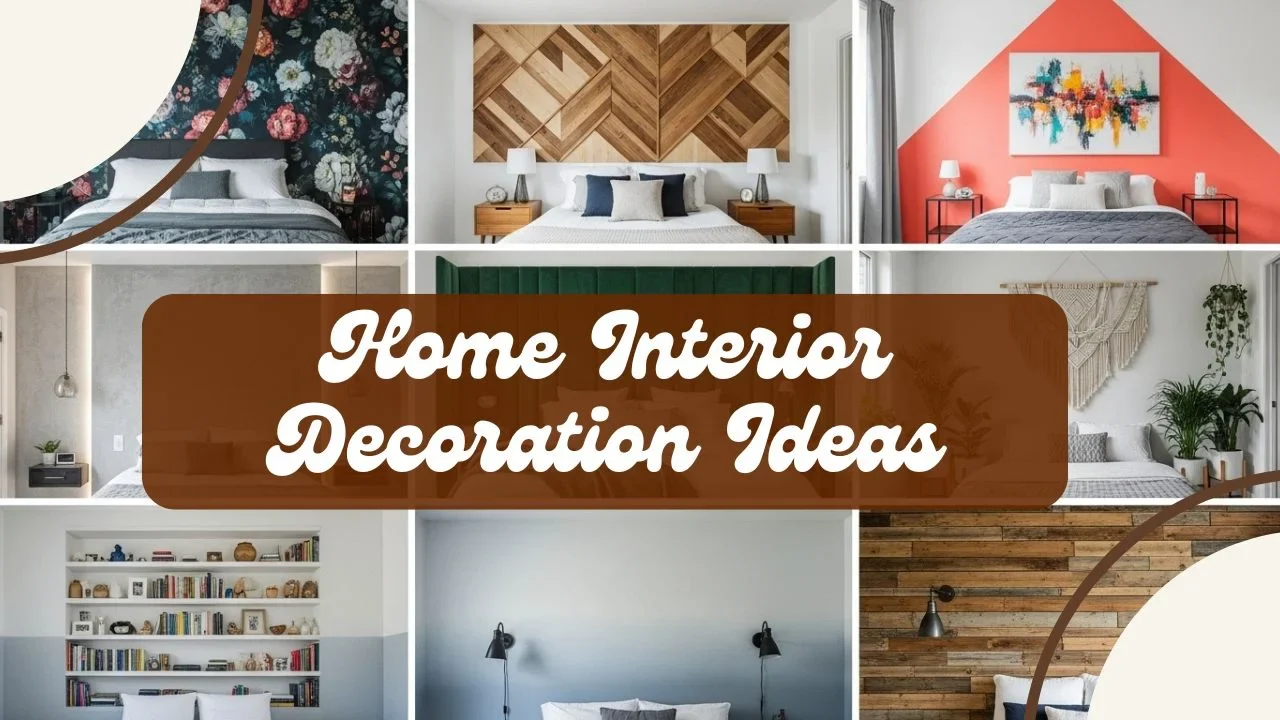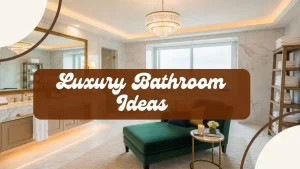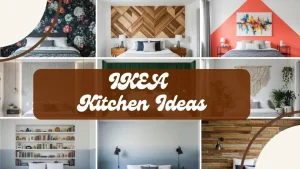Your home stands as more than just a structure; it represents a living narrative, a canvas ready for your unique story to unfold. Data shows that Americans typically dedicate between 10-20% of their home’s value to interior updates over time, reflecting a commitment to personal comfort and property value.
Ready to uncover straightforward yet impactful ways to beautify your surroundings? Explore these 11 insightful home interior decoration ideas designed to help you craft a living space that feels like a true extension of you.
1. Adopt a Harmonious Color Palette: Set Emotional Tone
Color, the silent language of design, holds immense power. It influences mood, evokes feelings, and defines a room’s entire atmosphere. Color provides the foundation upon which all other decorative elements rest, making a well-thought-out color palette selection crucial for successful home interior decoration. Experts note that colors subtly alter our psychology. They make a room appear more spacious, cozy, vibrant, or calm.
Here is how to achieve a harmonious color palette:
- Understand Color Psychology: Recognize how warm tones (reds, yellows) advance and foster energy, while cool tones (blues, greens) recede and promote calm.
- Pick a Main Neutral: Start with a versatile base like white, gray, or beige for walls. This allows other decor elements to shine. Neutral wall colors remain a top choice for over 70% of American homeowners seeking broad appeal.
- Add Accent Colors: Introduce secondary and tertiary hues through textiles, artwork, and accessories. This creates depth and visual pops.
- Test Colors in Light: Always apply large paint swatches on different walls. Observe them under various light conditions throughout the day before a final choice.
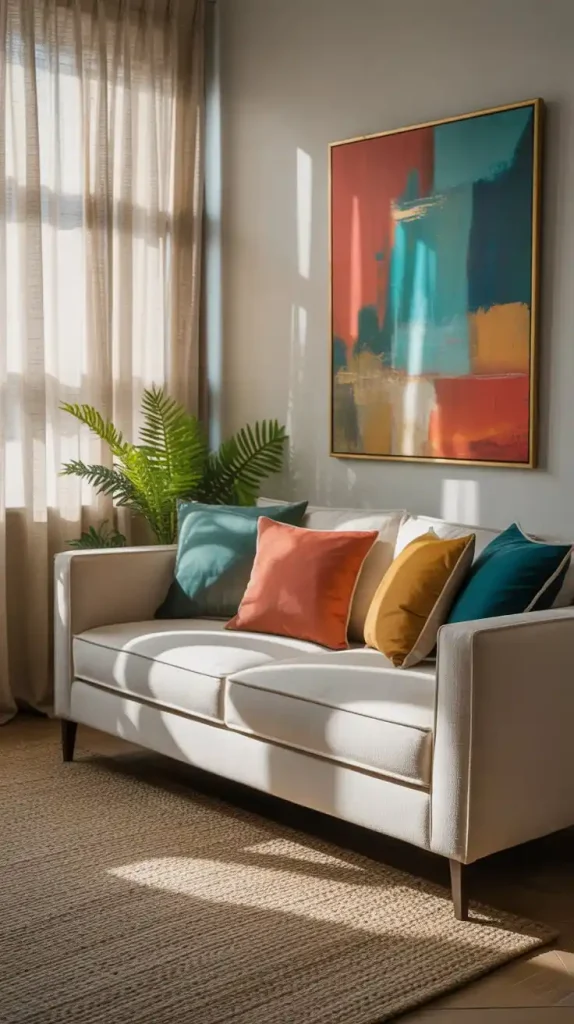
2. Master the Art of Texture Layer: Add Richness and Depth
If a room feels flat or lacks inspiration, the absence of texture often explains it. Layering various materials and finishes offers a sophisticated interior decorating technique that adds depth, warmth, and a rich, tactile appeal to your living spaces. It engages our senses of touch and sight. This transforms a plain room into a luxurious and inviting haven.
Here is how to apply texture layers:
- Start with Flooring: Begin with the base, such as a soft rug over hardwood or a textured carpet.
- Consider Furniture Upholstery: Think about the fabric of sofas and chairs.
- Add Throws and Decorative Pillows: Use items with diverse textures like velvet, knit, or linen.
- Select Window Coverings: Heavy drapes or sheer curtains offer different textural qualities.
- Introduce Accessories: Place ceramics, woven baskets, or metal sculptures around the room.
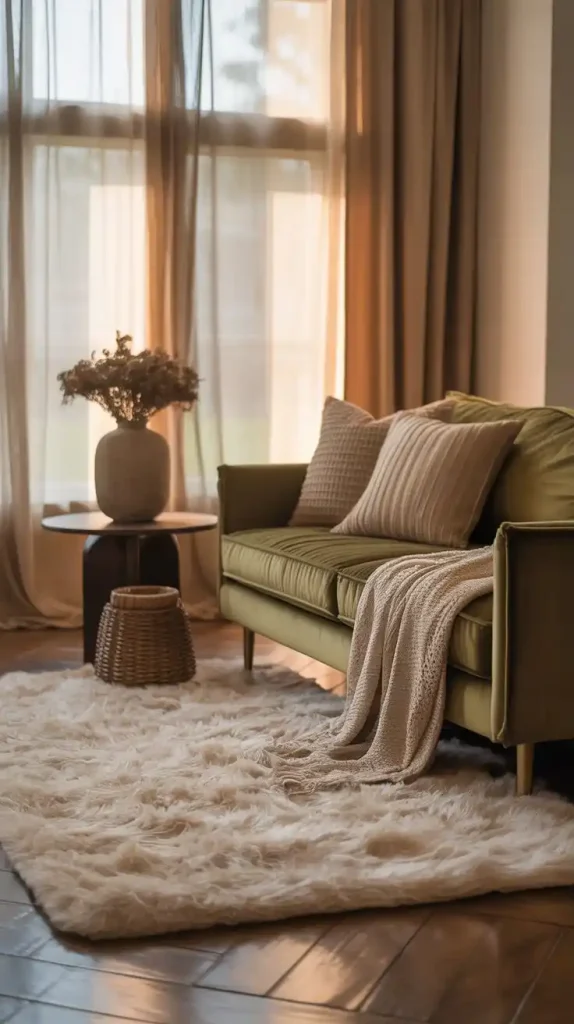
3. Introduce Biophilic Design with Houseplants: Boost Wellness and Vitality
Bring the vibrant energy of nature indoors. This timeless and increasingly popular aspect of home interior decoration involves houseplants. It goes beyond simple aesthetics; it aligns with biophilic design. This concept posits that humans possess an innate need to connect with nature. Research indicates that indoor plants significantly improve air quality, reduce stress levels, and boost overall well-being.
Here is how to introduce plants into your decor:
- Vary Sizes and Heights: Place large floor plants alongside medium-sized plants on tables and smaller succulents on shelves.
- Choose Stylish Planters: Select pots that complement your home’s decor style, such as ceramic, terracotta, or woven baskets. Major retailers like Target and HomeGoods, widely available across America, offer diverse planter options.
- Make Green Clusters: Group several plants of different types together. This forms a lush, captivating focal point.
- Utilize Vertical Space: Use hanging planters or wall-mount displays. This adds greenery at different levels, especially in compact spaces. NASA research shows certain houseplants remove up to 87% of air toxins in 24 hours, promoting healthier indoor air quality.
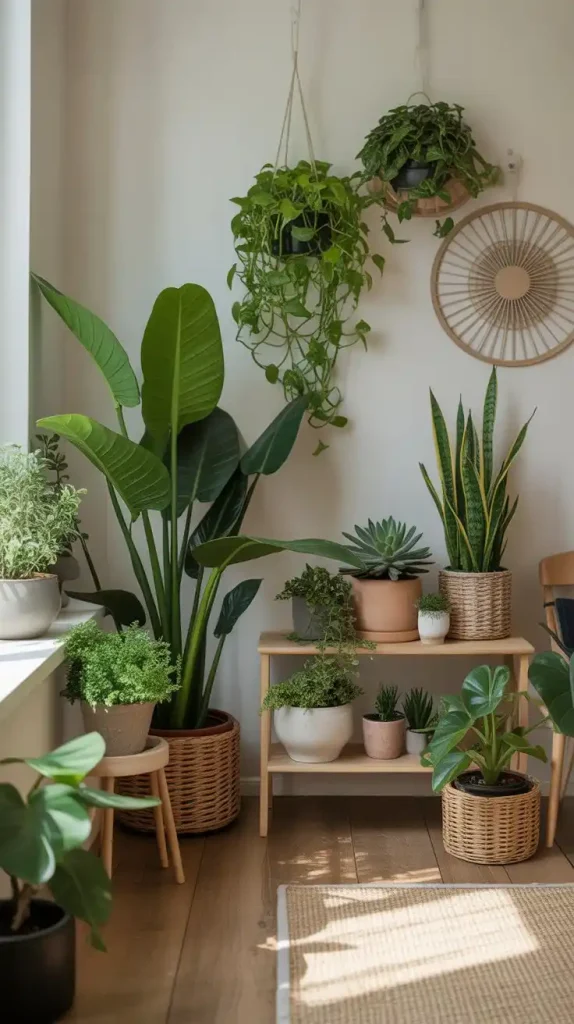
4. Apply Strategic Lighting: Beyond Simple Illumination
Lighting in home interior decoration extends far beyond its practical role of providing light. It acts as a powerful tool to set a mood, highlight architectural features, and create distinct zones within a room. Thoughtful light design transforms a flat space into a dynamic, inviting, and highly functional environment. It truly dictates how a space feels and how well you perform tasks within it.
Here is how to apply strategic lighting:
- Layer Light: Combine ambient light (general illumination), task light (focused for work), and accent light (to highlight features).
- Select Statement Fixtures: Pick an oversized pendant light or a sculptural floor lamp. These act as visual focal points.
- Install Dimmer Switches: Add dimmers to all light circuits. This allows you to adjust intensity and smoothly transition moods.
- Position Lights Carefully: Place fixtures to illuminate specific areas or artwork. This enhances their visual appeal.
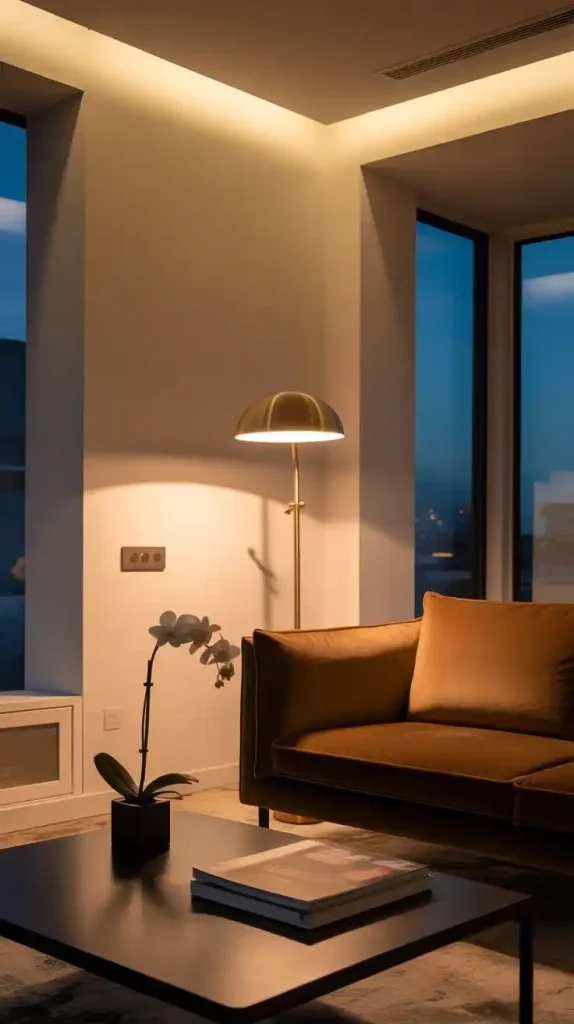
5. Create a Personal Gallery Wall: Tell Your Unique Story
Few elements in home interior decoration offer as much opportunity for personal expression as a well-arranged gallery wall. It forms a dynamic display of your memories, passions, and unique aesthetic. It transforms a plain wall into a captivating narrative. A thoughtful arrangement can anchor a room, draw the eye, and spark conversation. This makes it a truly authentic statement.
Here is how to create a personal gallery wall:
- Mix Media: Combine various forms of art. Include photographs, prints, illustrations, and even small decorative objects or mirrors.
- Vary Sizes and Orientations: Use frames of different sizes (small, medium, large) and orientations (portrait, landscape). This adds visual interest and flow.
- Establish a Theme: A consistent frame color, a specific subject matter, or a limited color palette can bring harmony to the collection.
- Plan Your Layout First: Arrange all your framed pieces on the floor. Experiment with spacing. You can also use paper templates taped to the wall to visualize placement.
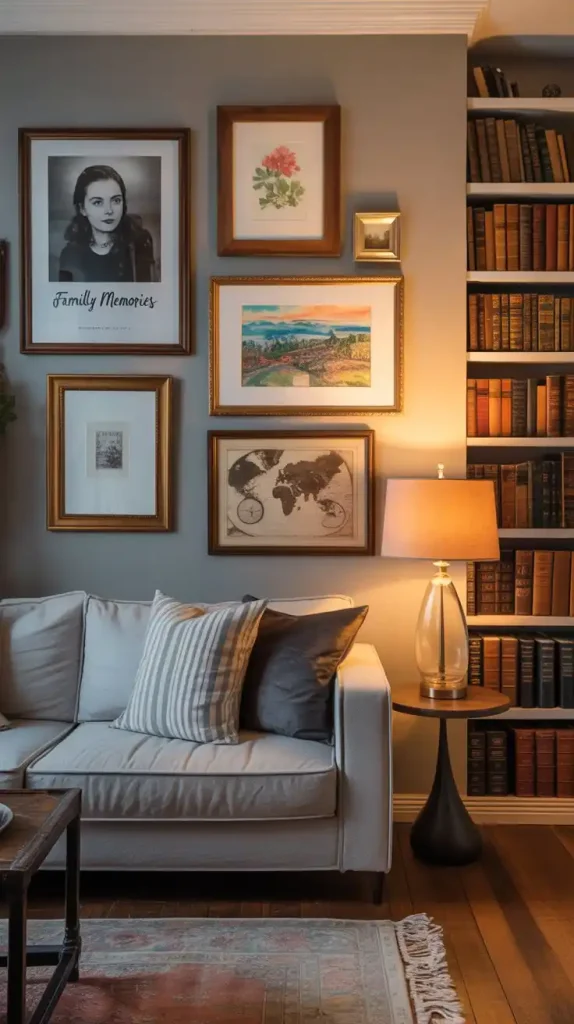
6. Use Area Rugs to Define Zones and Anchor Spaces: Functional Beauty
Area rugs often stand as unsung heroes in the world of home interior design. They perform multiple functions beyond simply adding softness underfoot. They play an instrumental role in defining distinct zones within an open-concept living space. They also anchor furniture arrangements and introduce a powerful element of color, pattern, and texture. They ground your decor, which prevents furniture from appearing to float.
Here is how to use area rugs effectively:
- Pick the Right Size: For a living room, ensure the rug is large enough for at least the front two legs of all major furniture pieces (sofa, armchairs) to rest on it. Ideally, all legs should sit on the rug.
- Define Areas: Use rugs to clearly mark a seating area, a dining zone, or a sleep space within a larger room.
- Add Color and Pattern: Use a rug to introduce an accent color or a bold pattern that complements your decor scheme. This adds dynamism to your floor.
- Improve Acoustics: Rugs help absorb sound, which reduces echoes in larger or open spaces. The average American home often features open floor plans, where rugs become crucial for sound damp.
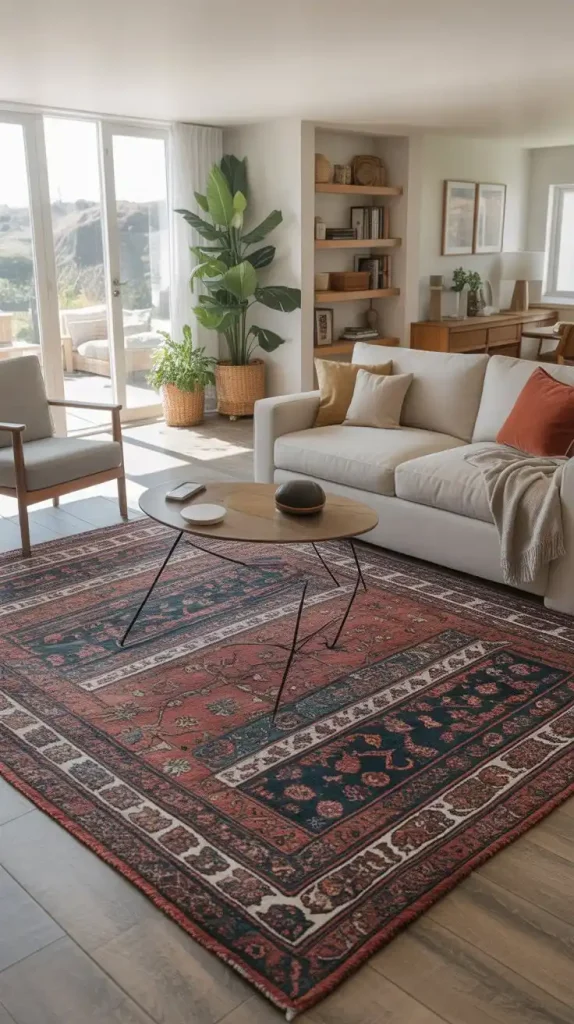
7. Elevate Windows with Thoughtful Treatments: Frame Your Views
Window treatments serve as more than just functional necessities for privacy and light control. They represent crucial decorative elements that greatly enhance a room’s style, add texture, and complete its aesthetic. Picking the right window treatments is a key home interior decoration idea that deeply impacts a room’s warmth, elegance, and overall ambiance. They frame your views and soften the transition between inside and outside.
Here is how to elevate windows with treatments:
- Choose Drapery: Floor-length curtains in rich fabrics add elegance and softness. Hang them wide and high to make windows appear larger.
- Select Roman Shades: These offer a tailored, sophisticated look. They pull up into neat pleats. They excel at light control and add a pop of color.
- Consider Woven Wood Shades: These bring natural texture and warmth. They create a relaxed, organic feel and filter light beautifully.
- Install Blinds or Shutters: These provide excellent light control and privacy with a clean, classic look. Custom options perfectly fit unique window shapes. You can find quality blinds and shutters at Diy home improvement stores like Lowe’s or The Home Depot, present in almost every American city.
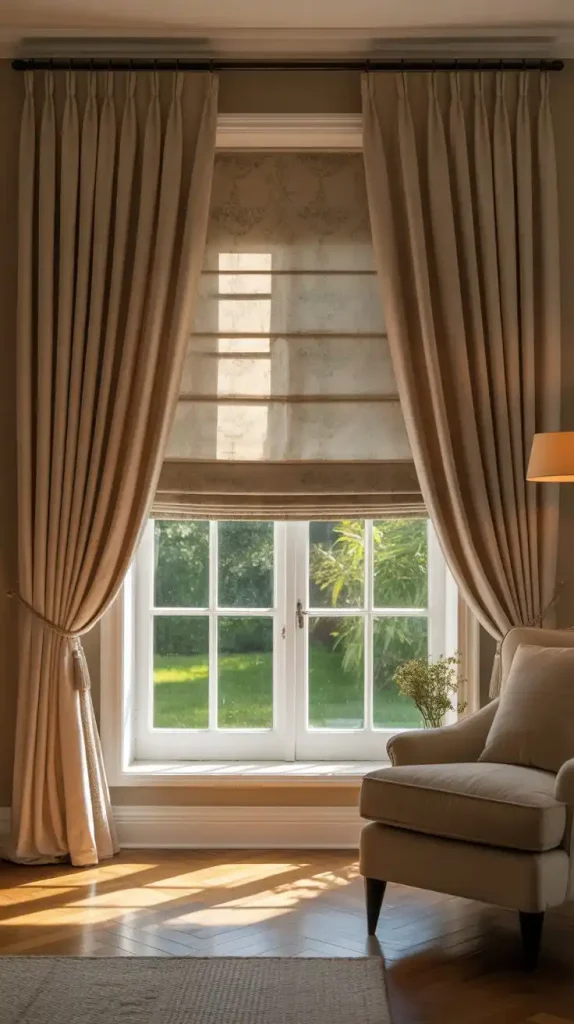
8. Introduce Statement Furniture Pieces: Create Visual Impact and Personality
Every room benefits from a focal point. In home interior decoration, a statement furniture piece perfectly fulfills this role. This is not about fill a room; it involves select one or two standout pieces that command attention, reflect your personality, and anchor the room’s design. They act as conversation starters and infuse your space with distinct character.
Here is how to use statement furniture:
- Identify a Unique Piece: Look for a sofa in a vibrant color, an unusual shape, or a dining table with a sculptural base.
- Consider Its Role: Decide if it will be a centerpiece (e.g., a bold sofa) or a strong accent (e.g., a vintage armoire).
- Balance the Room: Keep surrounding furniture and decor more understated. This allows the statement piece to truly shine.
- Ensure Style Consistency: The statement piece, while unique, should still fit within the overall aesthetic of your home decor. For unique finds, explore vintage shops in cities like Portland, Oregon, or online at sites like Wayfair or Etsy.
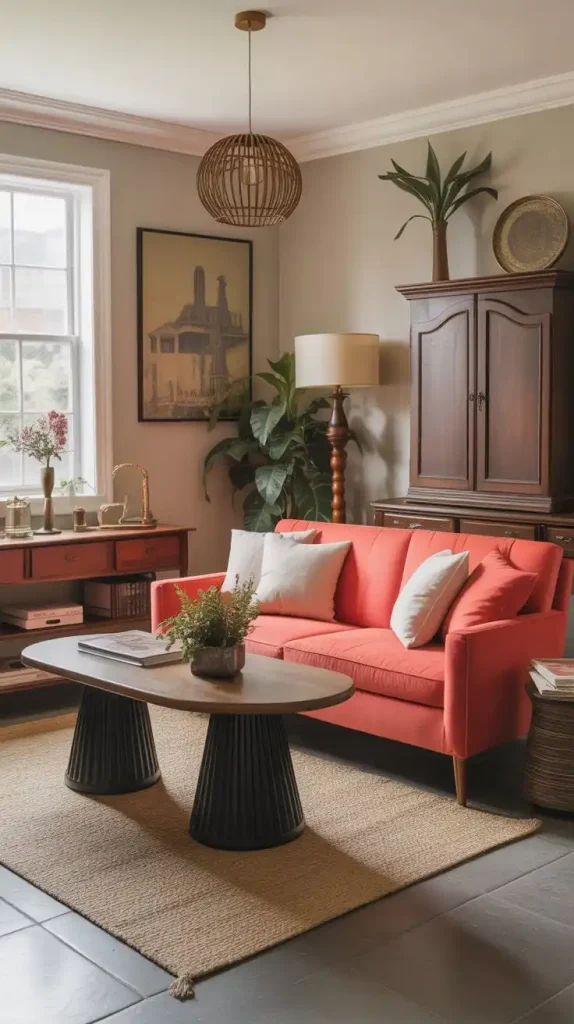
9. Curate Meaningful Decor and Collectibles: Practice Soulful Style
Your home should tell your story. One of the most heartwarming home interior decoration ideas involves weave in personal touches through a display of collectibles, souvenirs, and cherished mementos. These items infuse your space with personality, history, and a unique narrative that mass-produced decor simply cannot replicate.
Here is how to curate meaningful decor:
- Use Vignettes: Group related items together on a tray, shelf, or tabletop. Combine various heights, textures, and forms.
- Showcase on Open Shelving: Utilize open shelving to display curated collections of books, travel souvenirs, or family heirlooms.
- Employ Shadow Boxes: Protect and highlight small, delicate mementos like antique jewelry or tiny figurines within a protective enclosure.
- Create Photo Displays: Go beyond simple frames. Create a photo gallery wall, arrange photos on a picture ledge, or use digital frames. Flea markets in cities like Brooklyn, New York, or Pasadena, California, present unique vintage finds often at a fraction of retail prices.
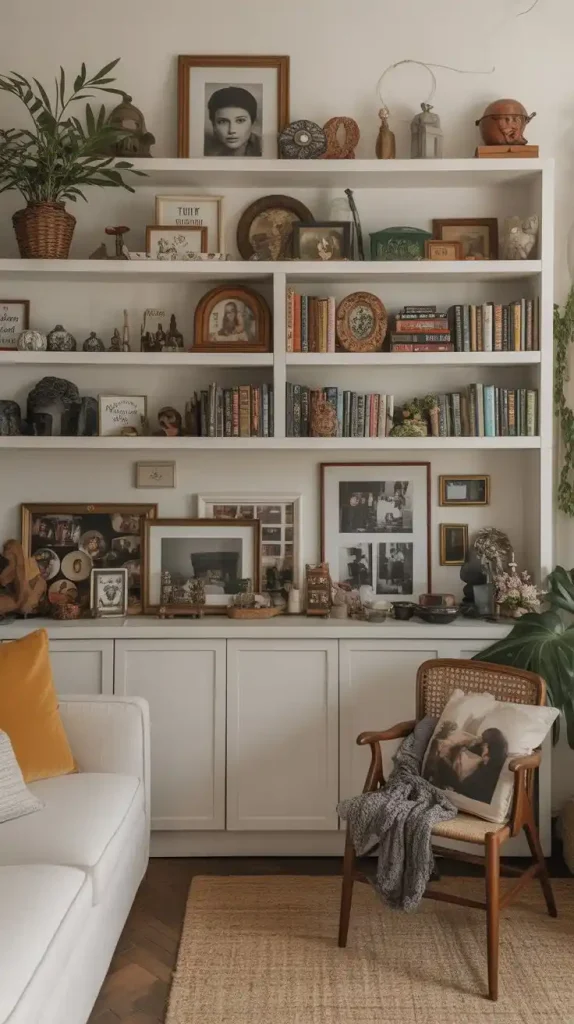
10. Apply Mirrors for Illusion and Light Play: Expand Your Horizons
Mirrors represent incredibly versatile tools in home interior decoration. They serve far beyond their primary function of reflection. When position strategically, they possess a unique ability to visually expand a room. They amplify both natural and artificial light. They also serve as stunning artistic or architectural elements. They act as a designer’s secret weapon to make spaces feel larger, brighter, and more dynamic.
Here is how to apply mirrors effectively:
- Place Opposite a Window: This captures and reflects natural light, outdoor views, and even the sky. It dramatically brightens the room.
- Use Across a Wall: A large mirror leaned against or mount on a wall can create the illusion of an additional room or expand a tight space.
- Position in Hallways: Place a mirror at the end of a long, narrow hallway. This makes it appear wider and less like a tunnel.
- Integrate in Gallery Walls: Combine various shapes, sizes, and framed mirrors within a gallery wall for a captivating reflective display that adds depth.
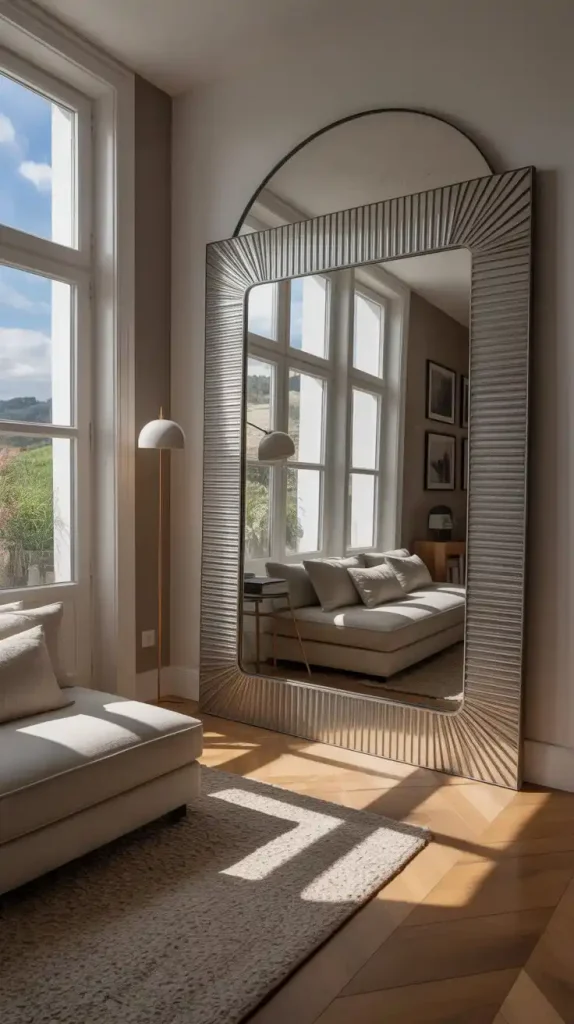
11. Design a Dedicated Comfort Nook: Create Your Personal Sanctuary
In the hustle and bustle of modern life, set aside a small, dedicated space for quiet reflection or relaxation. This proves a profoundly impactful home interior decoration idea. A cozy reading nook, a meditation corner, or simply a comfortable spot to unwind does not require an entire room. It simply needs thoughtful design to foster an inviting escape, promote personal well-being, and provide a sense of calm.
Here is how to design a comfort nook:
- Choose Comfortable Seating: Pick a plush armchair, a chaise lounge, or a bean bag chair with ample cushions and soft throws.
- Provide Good Lighting: A dedicated floor lamp or table lamp provides warm, inviting light for reading or quiet contemplation.
- Add a Small Table: A side table holds a cup of tea, a book, or a small plant.
- Include Personal Touches: A soft rug underfoot, a stack of your favorite books, and calming scented candles or diffusers enhance the space.
- Define the Space: Use furniture placement, a tall bookcase, or a decorative screen. This visually separates the nook from the rest of the room.
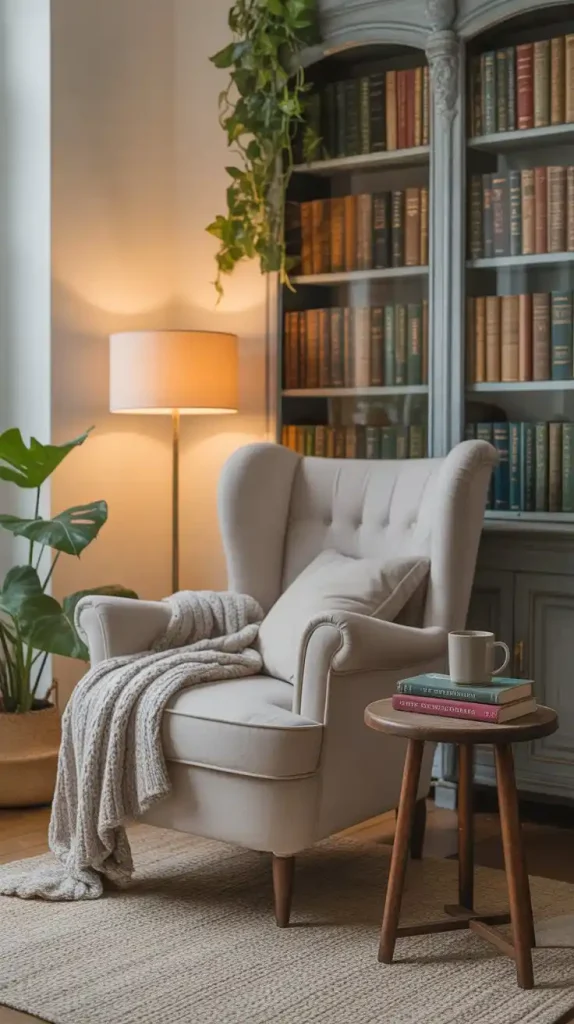
Frequently Asked Questions about Home Interior Decorations
How can one start a home decoration project?
Begin by assessing your needs and desires for the space. Think about how you use the room and the mood you wish to create. Gather inspiration from magazines, websites, or social media platforms like Pinterest. Establish a budget. A typical living room refresh in the U.S. can cost anywhere from $1,000 to $5,000, depending on furniture and accessories. Prioritize which elements you want to change first, such as paint color or furniture arrangement.
What common mistakes should one avoid in interior decor?
Avoid over-clutter. Too many items make a space feel chaotic rather than curated. Pay close attention to lighting. Poor light can make a room appear dull or small. Watch out for scale. Furniture too large or too small for a room disrupts balance. Lastly, do not rush the process; allow your decor to evolve over time. Remember that staging a home, a form of strategic decor, can potentially increase its sale price by up to 5% and reduce time on market in competitive U.S. real estate markets.
How does home decor impact well-being?
Thoughtful home decor significantly affects your mood and mental state. A well-organized and aesthetically pleasing space can reduce stress and promote relaxation. Personal touches, like cherished photos or meaningful art, foster a sense of comfort and belonging. Colors and textures also play a role in how you feel within a room. Creating a home that feels like a refuge greatly contributes to mental peace.
Conclusion
Your home serves as a dynamic reflection of who you are, and home interior decoration offers the powerful art that brings that vision to life. By adopting these 11 insightful home interior decor ideas, you embark on a creative journey that transforms your living spaces from mere rooms into deeply personal havens.
From orchestrate harmonious color palettes and layer rich textures to introduce vibrant greenery and create cozy comfort nooks, each idea provides a unique opportunity to infuse character, comfort, and undeniable beauty into every corner. Start your experiment, express your unique style, and savor the profound impact of a beautifully and thoughtfully decorated home.

